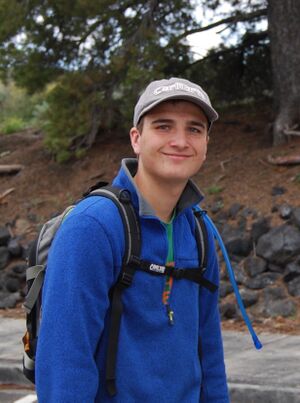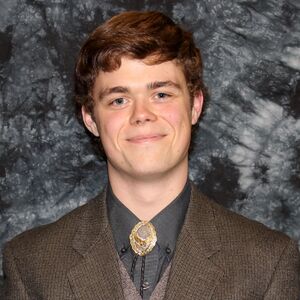Biochar Production System Beta Version
| [[File:[[File:|thumb|300px|left]]|300px|center|alt=]] | |
| Sponsors | |
| Team Name | NONE |
| Duration | May, 2019 - Present |
| Faculty Adviser |
|
| Mentor |
|
| Team Members |
|
This project covers the "Beta Prototype" development of a Biochar Reactor. The original prototype development can be found here.
This development is aimed at improving the original system in several of its shortcomings and producing a much more well developed design and functional prototype. Improved mechanical processes, shortened heating loops and heat exchangers, and improved electrical and control systems will offer improved system operation, and a more reliable and effective biochar production.
Biochar Overview[edit | edit source]
Biochar, the physical carbon-structure remnant of woody-mass biological materials, biochar is a porous material with properties that make it suitable for wastewater filtration in addition to its applications in agriculture. Biochar is the commonly known as "the poor man's activated carbon", like other activated carbons, biochar has significant microscopic surface area. This surface area applies itself well to chemical filtering processes. More information on activated carbon can be found here.
Beyond its applications for filtration, biochar shows value in the fields of agriculture. In most situations, biochar may be applied and turned into fields to provide a soil neutralizing effect; helping clay rich soils achieve better water transposition or throughput, and enabling water retention in sandy soils. Put simply, biochar helps water move through clay-based soils, and helps hold it in sandy soils.
It is by little stretch of the imagination that these two properties may be combined to provide benefits to both urban and rural communities. Cities and municipalities might use biochar to cleanse and purify their wastewater and in so doing, the biochar may become nutrient rich and loaded as a fertilizer, applicable for agricultural applications. Providing soil fertilization along with its beneficial water transposition properties, biochar may offer farmers great benefit and increase crop yield.
Project Objectives[edit | edit source]
As mentioned previously, this project aims to improve upon certain shortcomings in the previous prototype. The primary objectives are listed as follows:
- Improve auger operation and smooth movement
- Improve heating source control and operation
- Simplified control system and improved autonomy
These objectives are broken down further in the next subsections.
Auger Operation[edit | edit source]
To improve the auger's reliability and robust operation, it was decided that the auger's mounts should be upgraded from the previous design utilizing brass bushings and be replaced with true, high reliability bearings. Several options here were considered; with the initial design, bearings were not a feasible option due to their low heat tolerance and mandated close proximity to the heated pyrolysis chamber. However, the new design would require bearings, so the design for the pyrolysis chamber was changed to expose the bearings at both ends of the auger.
In addition to the use of bearings, a belt tensioner pulley was specified to apply additional belt tension to ensure reliable drive operation. The original design also required such a device, however, the tensioner used was one that was thrown together to spare time and cost. The new design specified a more reliable, standard tensioner.
Improved Heating Source[edit | edit source]
The original heating source was a propane burner which provided approximately 55kBTU directly at its outlet and heating a 55 gallon barrel which then vented through the pyrolysis chamber. This provided a solid supply of heat, but not without its own set of challenges. The first and foremost of these challenges was the fact that the propane burner was very quick to burn up propane. In fact, the burner could run through 5 gallons of propane in approximately 1.5 to 2 hours. Although this may not have been terrible, it resulted in very high operating costs.
The resultant solution was to use a different source of heat. It was suggested that a diesel heater could be used, and operated with the biodiesel produced by student groups on the University of Idaho campus. After some minor research, it was clear that a diesel heater could provide the necessary heating required, utilizing the readily available biodiesel was merely an added bonus.
Additional reasons that use of the diesel heater offers benefits to the Beta prototype include the fact that the heater included an easily controlled fuel drive and ignition system, a controlling photocell that provided necessary safety feedback.
Simplified Control and Autonomy[edit | edit source]
Although functional, the original control system was vastly over-complicated, clunky, and ineffective. The Beta version incorporates the changes to required control operations for the heater, but it also incorporates improved failure detection methods and improved selectivity to prevent false error mode shutdown.
The control system has also been altered to permit more intuitive control operation with fewer complex and redundant controls. Many controls were either not appropriately offered in the Human Machine Interface (HMI) or offered in so many places that they were quite confusing and ultimately useless. The new control system removed many of these complexities and replaced them with autonomous control algorithms.
Team Members[edit | edit source]
| Photo | Biography | Discipline |
|---|---|---|
| From Boise, Idaho. Adam O'Keeffe was destined for attending the University of Idaho because his whole family has gone to the University of Idaho. His enjoyment of the outdoors and living an active lifestyle dictates his daily life. His fondness for problem solving lead him to the Biological Engineering field. | BE | |
| From Weippe, Idaho; Joe Stanley grew up around 4-H youth programs. He worked on a variety of electrical projects that he applied to these youth programs, and his fascination with electrical engineering was formed. | EE |

